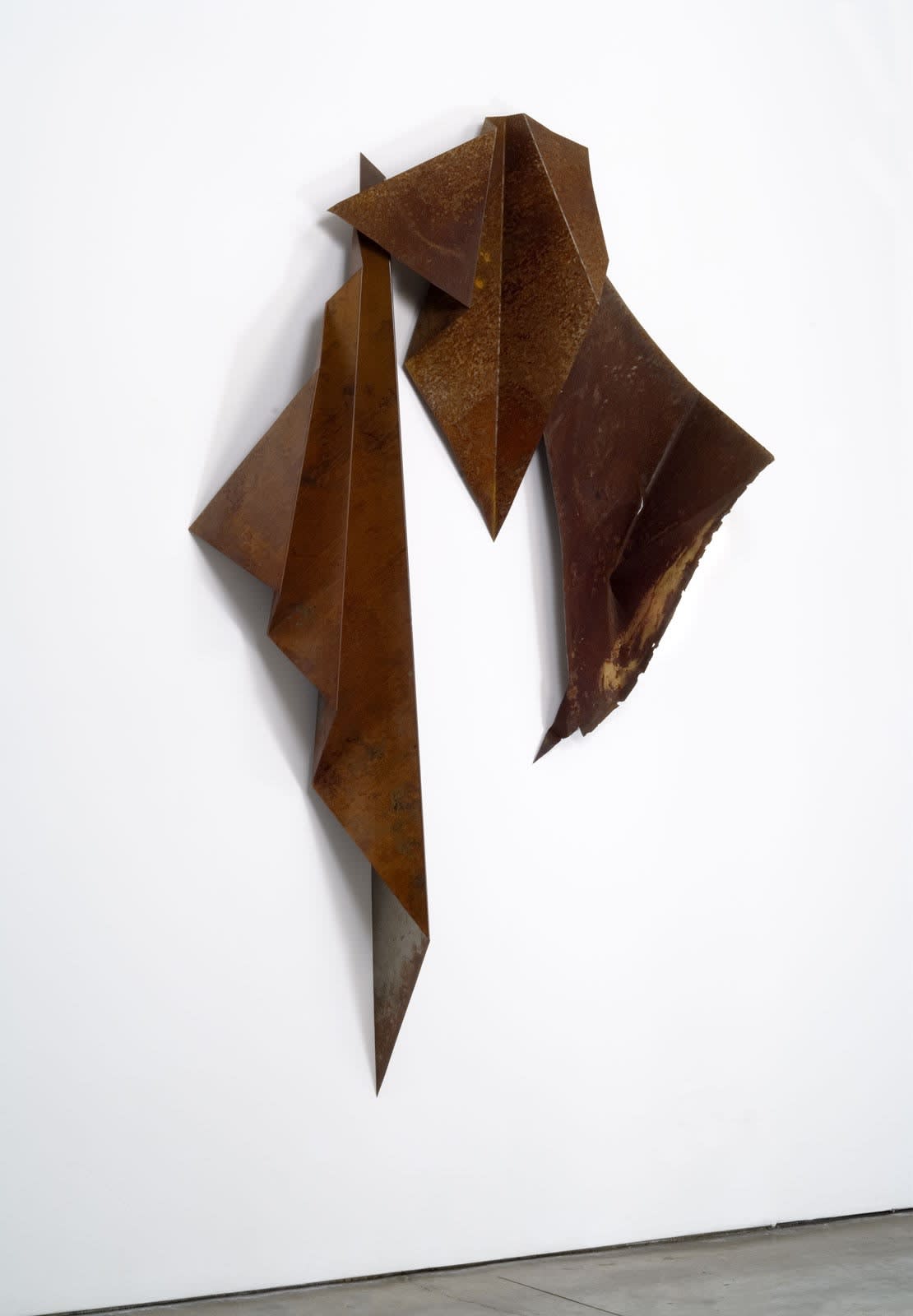MAYBE THIS IS APOCRYPHAL and maybe it’s not: On first seeing Robert Smithson’s crystalline Untitled, 1964–65, as a student in Karlsruhe, Germany, artist Katja Strunz put away her paintbrushes and began to make her own prismlike wall sculptures with multiple vanishing points. However, she abolished his mirrored panels to deny reflection and the infinite regress of their facings, and thus made what she called a Smithson “with its eyes poked out.” Like most origin stories and oedipal fables, this one is credible in its particulars and freighted with the genealogical implications of its performative blinding. And in relation to the angular cuts and multifaceted surfaces of the currently Berlin-based Strunz’s subsequent works, the account would seem to give the game away, were it not for the fact that, despite all her formalist leanings, Strunz’s appropriations—which reach beyond Smithson to Constructivism and other avant-gardes (to say nothing of her references to a broader history of forms)—are less morphological than conceptual. Or better, her appropriations are morphological to the extent that they thematize and make concrete the inescapability of literal and material precedent. As she pithily explains, “The die has been cast.”

